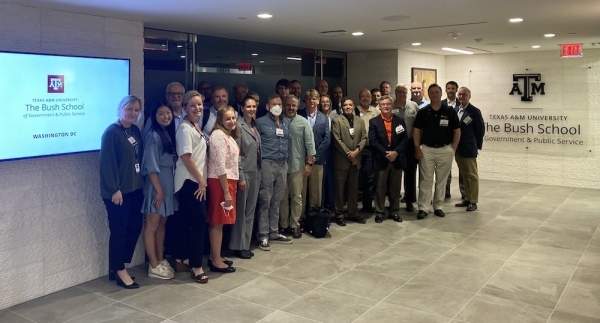March 02, 2023
 |
| Feature Article: Ensuring Next Generation 911 Interoperability |
|
New testing and certification program, laboratory will improve the functionality of our national 911 system.
First responders safeguard our communities from threats ranging from unexpected natural disasters to COVID-19 and flu cases to daily emergencies, illnesses, and injuries. According to statistics from the National Emergency Number Association, an estimated 240 million calls are routed to first responders every year via our country's 911 system. It is critical that responders and operators have access to the best tools and resources available so that they can effectively answer these calls quickly and accurately and keep our communities safe.
The Science and Technology Directorate (S&T) is collaborating with several partners to ensure that they not only gain this access, but to also enhance technology for a more seamless communication capability. To do this, S&T joined forces with the Critical Infrastructure Resilience Institute (CIRI) Center of Excellence, the Department of Transportation, Texas A&M University's Internet2 Technology Evaluation Center (ITEC), and other government and private stakeholders to develop and implement a Next Generation 911 (NG911) interoperability testing and certification program and laboratory that will focus on improving interoperability testing of solutions accessed across 911 platforms at the state and local levels. The ultimate goal of this resource will be to enhance the efficacy of the national 911 system as it transitions to a digital NG911 system designed to utilize and accommodate newer communications services that are now used by callers, dispatchers, and first responders.
"Each state and county in the U.S. is responsible for managing its own 911 platforms and services," said program manager David Canty of S&T's Office of University Programs. "As of February 2021, there were 5,748 disparate 911 platforms in the U.S., each operating its own technologies, components, and processes for sending and receiving calls and routing and dispatching emergency medical services. However, most of these platforms utilize analog technologies that aren't designed to optimally support our increasingly multimedia-driven communications infrastructure and capabilities, like text or photo messaging, internet-based voice and video calling, location sharing, and call forwarding and transferring. All of these are commonly used to relay critical information over our national 911 system."
 In August 2022, leaders from the 911/first responder industry (e.g., companies, first responders, and dispatchers) met with subject matter experts from academia, government, and standards development to define an framework for the NG911 interoperability testing and certification program & lab. Photo credit: Texas A&M University.
|
| READ THE FULL STORY → |
| Connect with us @dhsscitech: Twitter | Facebook | Instagram | LinkedIn | YouTube |
| Science and Technology Directorate scitech.dhs.gov |
| U.S. Department of Homeland Security | DHS.gov |




